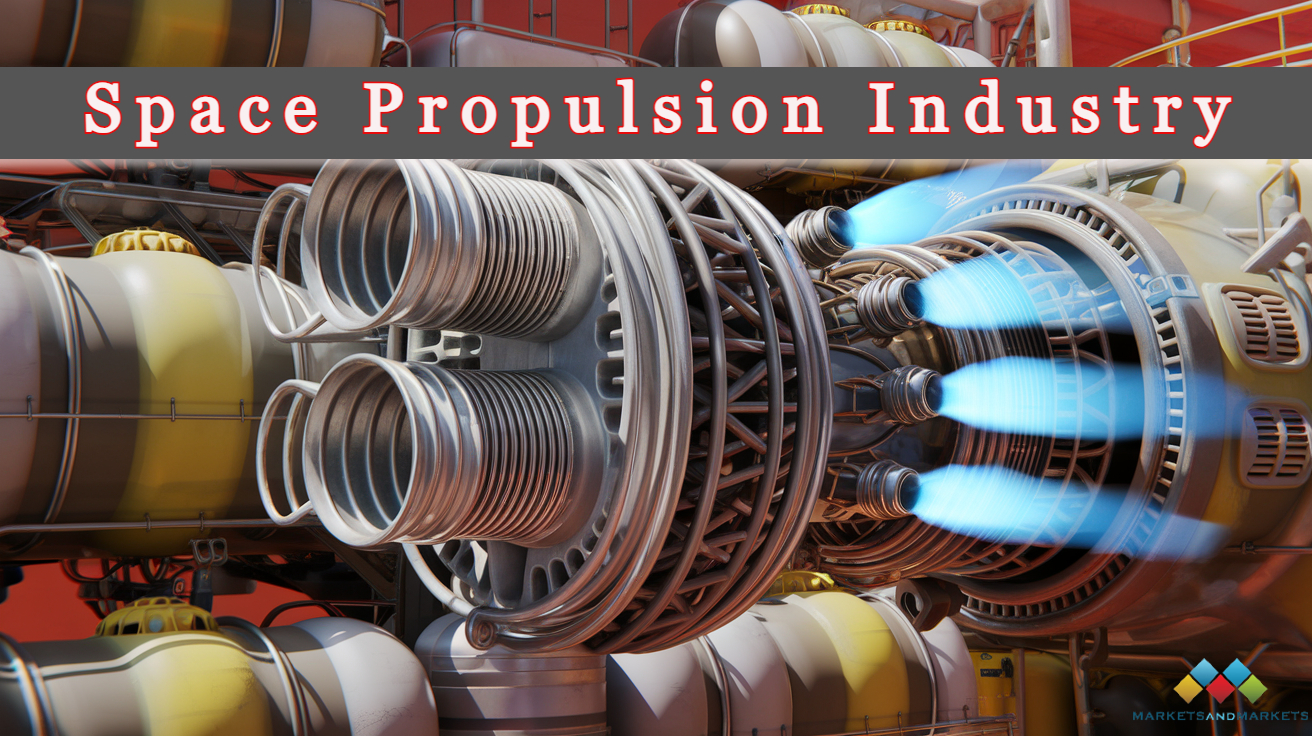Space propulsion is a critical technology in the field of space exploration, enabling spacecraft to travel through space, maintain or change orbits, and undertake missions to distant planets and beyond. The advancement in propulsion technologies is vital for the successful deployment and operation of satellites, space probes, and manned space missions.
What is Space Propulsion?
Space propulsion refers to the mechanisms that propel spacecraft in space. Unlike propulsion on Earth, where vehicles push against the ground or water, space propulsion systems work in the vacuum of space, where there is no atmosphere to push against. This necessitates the use of reaction-based propulsion, where the expulsion of mass in one direction results in motion in the opposite direction, following Newton’s Third Law of Motion.
What is the CAGR of Space Propulsion Industry Outlook?
The space propulsion industry is a rapidly growing sector, driven by the increasing demand for advanced propulsion systems and the expanding utilization of small and medium satellites in various applications. The global space propulsion market to be USD 10.6 billion in 2023 and is projected to reach USD 18.1 billion by 2028, at a CAGR of 11.3% from 2023 to 2028.

Types of Space Propulsion Systems:
Space propulsion systems can be broadly categorized into chemical and non-chemical propulsion systems. Each type has unique characteristics, advantages, and applications.
- Chemical Propulsion
- Conventional Chemical Propulsion: This is the most widely used propulsion type, relying on the combustion of propellants (fuel and oxidizer) to produce high-speed exhaust gases that propel the spacecraft. Chemical propulsion is powerful, providing high thrust, making it suitable for launching rockets from Earth and performing rapid maneuvers in space.
- Cryogenic Propulsion: A subset of chemical propulsion that uses supercooled liquid hydrogen and oxygen. This type is often used in the upper stages of rockets to achieve higher efficiency and performance.
- Non-Chemical Propulsion
- Electric (Ion) Propulsion: Electric propulsion systems, such as ion thrusters, use electricity (typically from solar panels) to accelerate ions to high speeds, creating thrust. Though the thrust is much lower compared to chemical systems, electric propulsion is highly efficient and can operate for extended periods, making it ideal for long-duration missions and deep-space exploration.
- Solar Sails: Solar sails harness the momentum of photons from the sun to propel spacecraft. While providing very low thrust, solar sails do not require fuel, enabling potentially limitless travel, making them suitable for certain deep-space missions.
- Nuclear Propulsion: This propulsion type involves the use of nuclear reactions to generate heat, which is then used to expel propellant at high speeds. Nuclear propulsion could provide higher efficiency and thrust compared to chemical and electric propulsion, but it is still in experimental stages.
- Tether Propulsion: This method uses long conductive tethers to generate thrust by interacting with a planet’s magnetic field. Tether propulsion is still largely theoretical but offers a potential low-cost method for certain orbital maneuvers.
Applications of Space Propulsion:
Space propulsion systems are used in various applications, each requiring different capabilities:
- Launch Vehicles: Chemical propulsion is primarily used to launch spacecraft from Earth, providing the necessary thrust to overcome gravity and enter orbit.
- Satellites: Once in orbit, satellites use small propulsion systems for station-keeping, orbit adjustments, and deorbiting at the end of their operational life. Electric propulsion is becoming increasingly popular for these tasks due to its efficiency.
- Interplanetary Missions: For missions to other planets or deep space, propulsion systems must provide sustained thrust over long periods. Electric and nuclear propulsion systems are ideal candidates for such missions.
- Space Exploration: Manned missions, such as those to the Moon or Mars, will require advanced propulsion systems that can safely transport humans and equipment over vast distances and enable safe return journeys.
Challenges and Future of Space Propulsion:
Despite the significant advancements in space propulsion, several challenges remain:
- Efficiency vs. Thrust: High-efficiency propulsion systems like electric and nuclear propulsion provide low thrust, limiting their use in situations where rapid acceleration is needed.
- Cost: Developing and deploying advanced propulsion systems, especially nuclear propulsion, is expensive and involves significant regulatory and safety considerations.
- Longevity and Reliability: Propulsion systems must operate reliably over long durations in the harsh environment of space.
Key Industry Leaders in Space Propulsion Technology:
Leading companies in the space propulsion market, such as Safran S.A. (France), SpaceX (US), L3Harris Technologies Inc. (US), IHI Corporation (Japan), and Northrop Grumman Corporation (US), play a pivotal role in driving the industry forward. These major players are equipped with advanced manufacturing facilities and robust distribution networks spanning North America, Europe, Asia Pacific, the Middle East & Africa, and Latin America, enabling them to meet the growing global demand for innovative space propulsion technologies.
Looking to the future, continued research and development are expected to address these challenges. Emerging technologies like fusion propulsion, advanced ion thrusters, and hybrid systems combining chemical and electric propulsion are on the horizon, promising more efficient, powerful, and versatile propulsion solutions. These advancements will play a crucial role in enabling ambitious space missions, including human exploration of Mars and beyond, deep-space exploration, and the further expansion of satellite networks critical for communication, navigation, and Earth observation.
